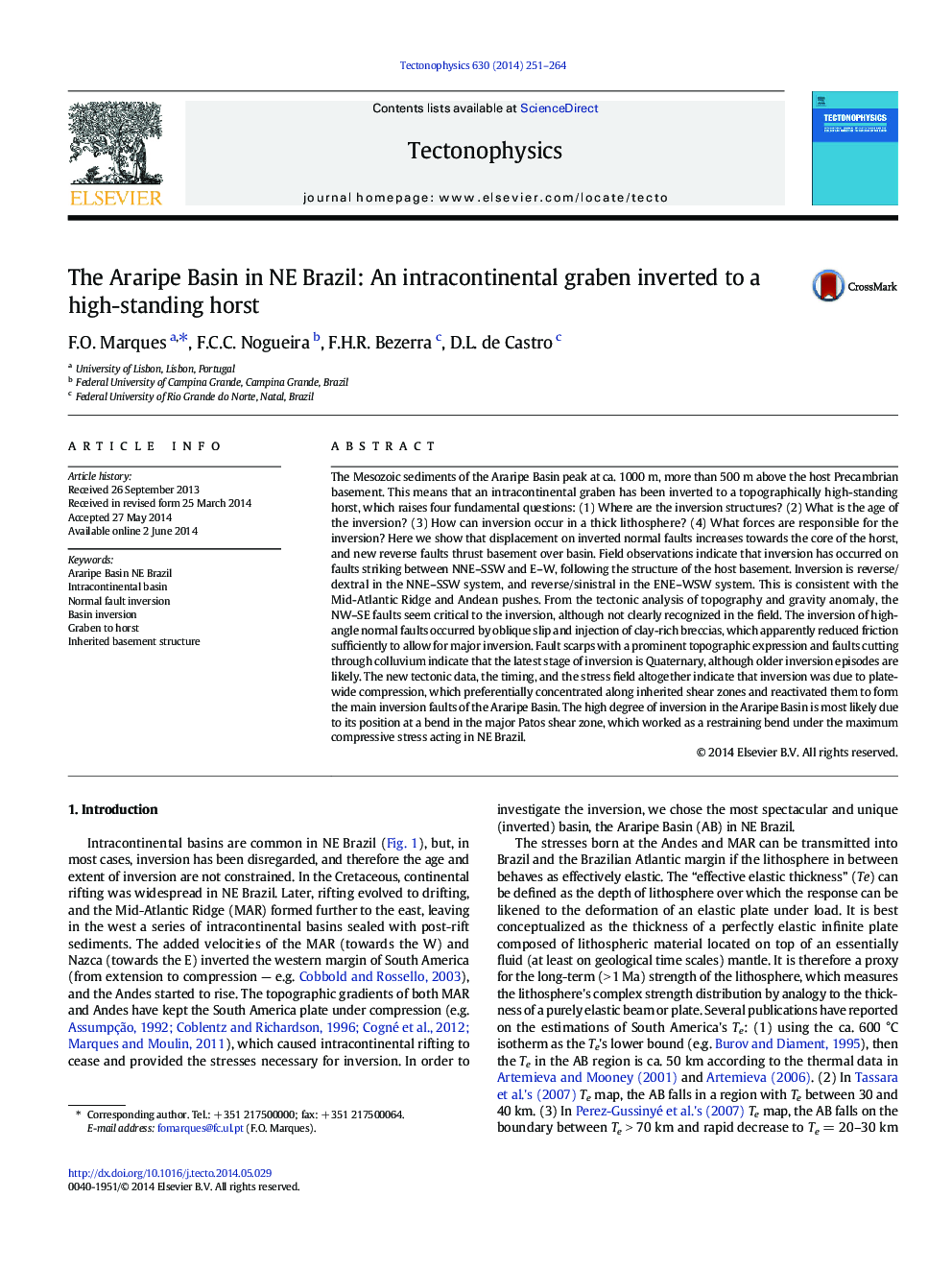| کد مقاله | کد نشریه | سال انتشار | مقاله انگلیسی | نسخه تمام متن |
|---|---|---|---|---|
| 6433707 | 1636761 | 2014 | 14 صفحه PDF | دانلود رایگان |
- Tectonic inversion of basins in a thick continental lithosphere
- Inversion facilitated by oblique motion and soft sediment injection
- The latest stage of tectonic inversion is Quaternary.
- Tectonic inversion was driven by topographic forces.
The Mesozoic sediments of the Araripe Basin peak at ca. 1000Â m, more than 500Â m above the host Precambrian basement. This means that an intracontinental graben has been inverted to a topographically high-standing horst, which raises four fundamental questions: (1) Where are the inversion structures? (2) What is the age of the inversion? (3) How can inversion occur in a thick lithosphere? (4) What forces are responsible for the inversion? Here we show that displacement on inverted normal faults increases towards the core of the horst, and new reverse faults thrust basement over basin. Field observations indicate that inversion has occurred on faults striking between NNE-SSW and E-W, following the structure of the host basement. Inversion is reverse/dextral in the NNE-SSW system, and reverse/sinistral in the ENE-WSW system. This is consistent with the Mid-Atlantic Ridge and Andean pushes. From the tectonic analysis of topography and gravity anomaly, the NW-SE faults seem critical to the inversion, although not clearly recognized in the field. The inversion of high-angle normal faults occurred by oblique slip and injection of clay-rich breccias, which apparently reduced friction sufficiently to allow for major inversion. Fault scarps with a prominent topographic expression and faults cutting through colluvium indicate that the latest stage of inversion is Quaternary, although older inversion episodes are likely. The new tectonic data, the timing, and the stress field altogether indicate that inversion was due to plate-wide compression, which preferentially concentrated along inherited shear zones and reactivated them to form the main inversion faults of the Araripe Basin. The high degree of inversion in the Araripe Basin is most likely due to its position at a bend in the major Patos shear zone, which worked as a restraining bend under the maximum compressive stress acting in NE Brazil.
Journal: Tectonophysics - Volume 630, 3 September 2014, Pages 251-264
